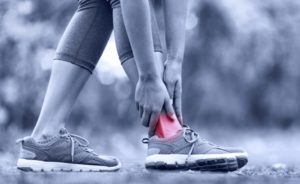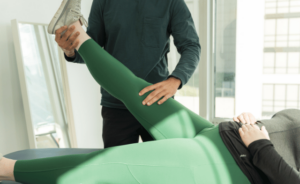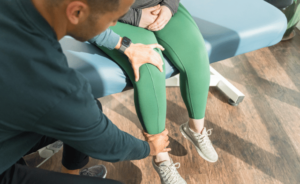Understanding Aging-Related Mobility Challenges
Aging comes with several mobility-related challenges that can affect seniors’ independence and overall quality of life:
1. Muscle Weakness: As we age, there is a natural loss of muscle mass and strength, which can lead to difficulties in performing daily activities such as standing up from a chair, climbing stairs, or carrying groceries.
2. Joint Stiffness: Joints may become stiffer with age, making it harder to move comfortably and perform activities that require flexibility.
3. Balance Issues: Reduced balance can increase the risk of falls and injuries among seniors, leading to a loss of confidence in their ability to move independently.
4. Pain and Discomfort: Chronic pain conditions, such as arthritis, can become more prevalent in older adults, hindering their mobility and affecting their overall well-being.
The Role of IMS in Geriatric Care
Intramuscular Stimulation (IMS) is a specialized physiotherapy technique that focuses on addressing muscle pain and dysfunction by targeting trigger points within the muscles. These trigger points are tight knots of muscle fibers that can develop due to various factors, including injury, overuse, or stress. IMS is particularly beneficial for seniors because it helps alleviate pain, improve mobility, and enhance overall physical function.
How IMS Works for Seniors:
- Assessment: A qualified physiotherapist assesses the senior’s condition, including their range of motion, muscle strength, and areas of pain or discomfort.
- Needle Insertion: Fine needles are inserted into the muscles surrounding the affected areas. The needles are precisely inserted into trigger points to release muscle tension and promote relaxation.
- Stimulation: The needles stimulate a healing response in the muscle. This stimulation encourages improved blood flow to the area, reducing pain and discomfort.
- Improved Muscle Function: IMS helps restore proper muscle function, which is essential for mobility and independence.
Benefits of IMS for Seniors:
- Pain Relief: IMS provides effective pain relief for seniors dealing with chronic pain conditions, allowing them to move more comfortably.
- Enhanced Mobility: By targeting muscle tightness and dysfunction, IMS can improve range of motion and mobility in joints, making it easier for seniors to perform daily activities.
- Increased Muscle Strength: IMS can help seniors regain muscle strength, which is crucial for maintaining independence in activities like walking, climbing stairs, and lifting objects.
- Improved Balance: IMS can contribute to better balance and coordination, reducing the risk of falls and injuries.
- Reduced Dependence on Medications: Seniors who experience chronic pain often rely on medication for relief. IMS can reduce the need for pain medications, which may have side effects or interactions with other medications.
- Enhanced Quality of Life: With reduced pain and improved mobility, seniors can enjoy a better quality of life, engage in social activities, and maintain their independence.
Incorporating IMS into Geriatric Care Plans
Integrating IMS into geriatric care plans can significantly benefit seniors. Here are steps to consider:
1. Consultation with a Qualified IMS Practitioner: Begin by scheduling a consultation with a registered physiotherapist experienced in IMS. They will assess the senior’s condition and create a personalized treatment plan.
2. Personalized Treatment Plan: The physiotherapist will develop a customized IMS treatment plan tailored to the senior’s specific needs and goals.
3. Consistent Treatment Schedule: Consistency is key to achieving the best results with IMS. Establish a regular treatment schedule that aligns with the senior’s needs and goals.
4. Exercise and Rehabilitation: In addition to IMS, the physiotherapist may recommend specific exercises and rehabilitation programs to further enhance mobility and strength.
5. Education and Home Exercises: Educate seniors about the benefits of IMS and provide guidance on exercises they can perform at home to maintain their progress.
6. Monitor Progress: Regularly assess the senior’s progress and make adjustments to the treatment plan as needed. Communication between the physiotherapist, senior, and their caregivers is essential.
Success Story: Robert’s Journey to Independence
Robert, an 80-year-old retiree, had always been an active and independent individual. However, in recent years, he began experiencing chronic hip pain, which significantly limited his mobility and independence. Simple tasks like walking to the local park or going grocery shopping became increasingly challenging and painful.
Robert decided to explore physiotherapy options and was introduced to Intramuscular Stimulation (IMS). After a thorough assessment, his physiotherapist developed a personalized IMS treatment plan.
Over several weeks of consistent IMS sessions, Robert experienced a remarkable transformation. The chronic pain in his hip gradually subsided, allowing him to move more freely. He also regained strength and balance through targeted exercises recommended by his physiotherapist.
With renewed confidence and mobility, Robert resumed his daily activities with enthusiasm. He enjoyed leisurely walks in the park, visited friends, and even joined a local seniors’ fitness group. IMS had not only alleviated his pain but also improved his overall quality of life and independence.
Conclusion
Aging should not be synonymous with a decline in mobility and independence. Intramuscular Stimulation (IMS) offers a promising avenue for seniors to address pain, enhance mobility, and maintain their independence. By consulting a qualified IMS practitioner, seniors can embark on a journey toward a more active and pain-free life.
IMS, when integrated into geriatric care plans, can empower seniors to continue enjoying the activities they love, maintain their independence, and age gracefully with confidence. The golden years can indeed be golden, and IMS plays a vital role in making that a reality for many seniors.






